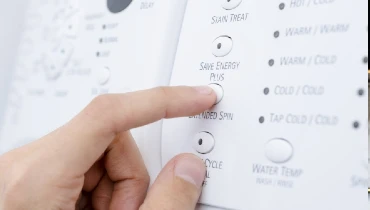How to Tell If Your Appliances Are Energy Efficient

The main ways to check your appliances’ energy efficiency are to look for labels and ratings and to calculate actual electricity consumption by using a meter. Neither method is terribly difficult, but you’ll need some key details to examine your appliances safely or to determine if you need your appliances repaired or serviced.
Start Here: Energy Efficiency Labels on Appliances
Check the external surfaces of your appliance, and the doors, for an ENERGY STAR® label. This is the most common energy efficiency label on an appliance, and there are several subtypes:
- A standard ENERGY STAR label means the appliance meets the minimum requirements of this federal program.
- An appliance with the “Save More” ENERGY STAR label is more efficient than a standard-labeled one.
- An appliance with the “Most Efficient” ENERGY STAR label is—you guessed it—the most efficient.
There’s also an appliance energy efficiency tier rating from the Consortium for Energy Efficiency (CEE), a reputable organization. If your appliance has this label, here’s a quick reference for the tiers:
- CEE Tier 1 is the equivalent of a standard ENERGY STAR rating, which means it meets minimum requirements for efficiency.
- CEE Tiers 2, 3, and 4 are more efficient than Tier 1. They’re all in the range of ENERGY STAR’s “Save More” standards.
- CEE Advanced Tier is the most efficient and matches ENERGY STAR’s “Most Efficient” standards.
Related Topic: Energy Saving Tips
How to Calculate How Much Energy an Appliance Uses
Look for the Energy Guide sticker on your appliance first, which is present on most units. This sticker displays the appliance’s average energy consumption in kilowatt-hours (kWh), as well as the average annual energy cost in US dollars. You can also do a simple calculation based on the wattage that’s listed on your appliance’s Underwriter’s Laboratory (UL) label. If that label shows amps or volts instead of watts, you’ll need to do a quick conversion before using the two formulas below.
(wattage × hours used per day) ÷ 1000 = daily kilowatt-hours consumed
Then…
daily kilowatt-hours consumed × days per year you use this appliance = annual energy consumption
If you want to calculate the energy cost for an appliance, you’ll need to know your electricity cost per kilowatt-hours, which you can discuss with your utility provider. After you have this figure, multiply it by your annual energy consumption (in kWh) to see your approximate annual cost.
Control More Factors That Influence Appliance Energy Consumption
Keep in mind that appliance energy usage can fluctuate—for example, it can become less efficient if it’s not regularly maintained. It also may not operate efficiently if the electrical system isn’t up to code, so be sure your major appliances are all on dedicated circuits and that you respond quickly if your appliance keeps tripping a circuit breaker.
The best way to keep your appliances efficient is to rely on an experienced appliance pro like Mr. Appliance to provide regular maintenance, and repair services whenever you need them. If you’re interested in starting a maintenance plan, or need repairs, call us or schedule an appointment today.
 Click to call
Click to call


